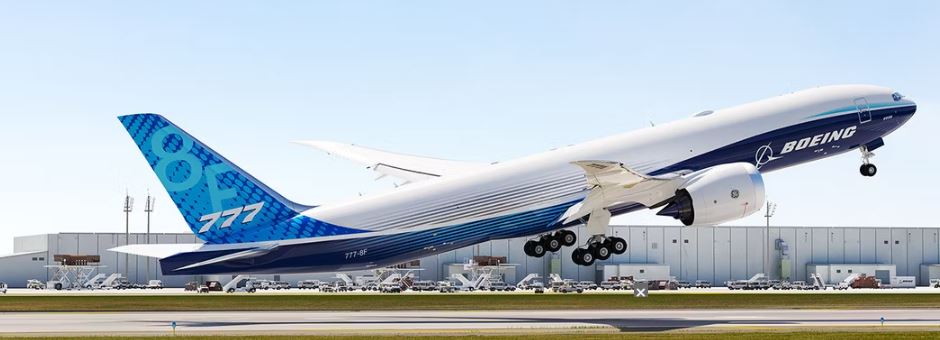a quick tour to the most recent long-range freighter from Boeing and its users.
We’ve provided numerous development updates on Boeing’s most recent and eagerly anticipated 777 family airliner. Unsurprisingly, the spotlight has largely been on the 777-8 and 777-9 passenger planes rather than the freighter version of the 777-8, which competes with the A350F and is probably going to replace the aging 747Fs. What progress is being made on Boeing’s next long-range freighter?

Comparisons and Specifications
Boeing’s 777-8F is based on the 777F program’s success and the knowledge gained during the development of the 777X, and it promises to offer the highest payload in its class. The 777X freighter will be able to carry 118.2 tonnes, an increase of 11 tonnes over the 777F, in comparison to the A350F, which can accommodate a 109-tonne cargo. Additionally, Boeing says that its brand-new cargo airliner will have the lowest operating costs per tonne, the most fuel-efficient design yet, and the lowest CO2 emissions in its class. With a range of up to 4,700 NM (8,700 km) at maximum payload, approximately 300 NM more than Boeing’s newest model, the A350F appears to have an advantage.

The 777-8 and 777-8F have the same length of 232.5 ft (70.86 m) and wingspan (with enlarged wingtips, 235 feet, 5 in (71.75 m)), according to Boeing’s website. The aircraft can accept 690 f3 (19.5 m3) main deck pallets and 415 f3 (11.8 m3) lower hold pallets, and it is meant to work smoothly with their prior 777 freighters. Additionally, even though the cargo doors on both 777 freighters are the same size, the substantially longer 777-8F will be able to accommodate an additional four main-deck pallets and three lower-deck pallets.
Who made the orders?
Several well-known freight operators have already placed orders for the 777-8F, with the first delivery scheduled for 2027. Qatar Airways was the first 777-8F customer, according to a statement from Boeing on January 31, 2022, in which the firm announced the plane’s launch and included a purchase agreement for 34 aircraft and options for 16 more. This incident began in 2019, when Akbar Al Baker, the CEO of the famed airline, said, “And so it was done.”
Then, in March 2022, Ethiopian Airlines, the most well-known airline in Africa, signed a Memorandum of Understanding to buy five 777-8F planes. Since then, they have acquired more 777Fs, and their current cargo fleet consists of a few 737-800 freighters and a 767 that has been modified. The Lufthansa Group purchased seven 777-8F aircraft in May 2022 to become the first European buyer of the model. They have bought a few 777Fs to aid with capacity while they wait for the much-anticipated 777X variant to arrive.
Cargolux, the flag carrier cargo airline for Luxembourg, and Boeing agreed to an agreement for ten aircraft with options for an additional six. Cargolux previously disclosed their intention to replace their ailing fleet of 747-400Fs at the Farnborough International Airshow with the Boeing 777-8F.
All Nippon Airways (ANA) changed two of its 777F orders during the end of the previous year into 777-8Fs, with delivery anticipated for 2028. Although one of the 767s is undergoing maintenance, the Japanese flag carrier currently runs a cargo fleet of nine 767Fs and two 777Fs. Two of Boeing’s most recent freighters were ordered by Silk Way West Airlines, a sizable cargo carrier in Azerbaijan. Delivery is anticipated in 2029 to 2030. Through this agreement, their fleet, which presently consists of seven 747-400Fs and five 747-8Fs with five 777-200Fs and two A350Fs on the way, would eventually grow to 21 aircraft.




